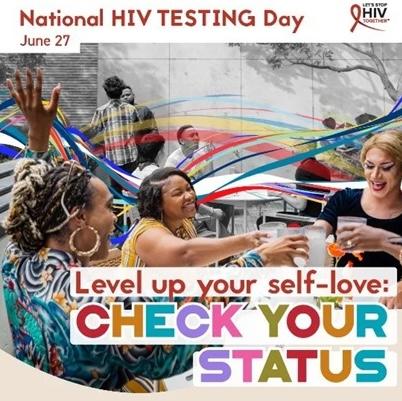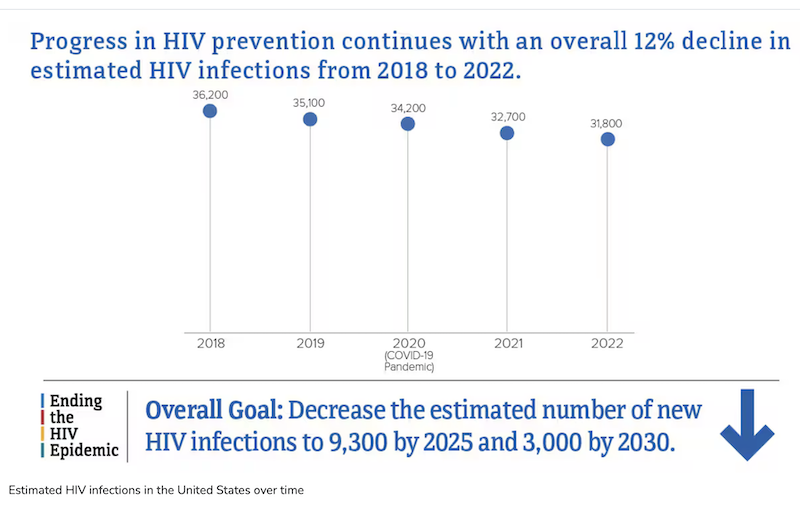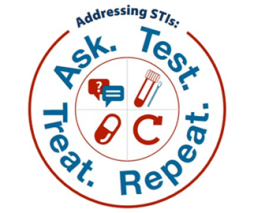
HIV testing has made great strides over the decades. Most people with HIV in the U.S. know their serostatus and are in care.
Progress is likely to continue as there are more options for getting tested. The theme for HIV Testing Day 2024 (June 27) is Level up your self-love: check your status. According to CDC, this was selected as it "highlights the power of HIV testing to give people the information they need to make decisions to keep themselves and their partners healthy, regardless of their test results."
Trends in HIV Diagnoses
Since the 1980s, annual HIV infection cases (HIV incidence) have declined by two-thirds; annual cases declined 12% from 2018-2022, with a 30% reduction among 13-24 year olds. Read more in Estimated HIV Incidence and Prevalence (CDC, 2024).

The value of HIV testing is clear. Getting on antiretroviral treatment and achieving an undetectable viral load benefits one's own health and effectively eliminates the risk of transmitting HIV to others. These benefits are expressed in Ending the HIV Epidemic: A Plan for America, whose first pillar is to "diagnose all people with HIV as early as possible," and its second pillar: "treat people with HIV rapidly and effectively to reach sustained viral suppression."
Best Practices: HIV Testing and Care Entry
A wide range of HIV testing and care engagement interventions have been developed over the decades by HRSA's Ryan White HIV/AIDS Program (RWHAP). Following are highlights from the Best Practices Compilation of interventions that have been shown to improve HIV outcomes in a "real world" setting.
Addressing STIs

Addressing STIs: Ask. Test. Treat. Repeat. is a HRSA project featuring four interventions designed to enhance HIV/STI testing: audio computer-assisted self-interview sexual history taking, patient self-collection of test specimens, sexual and gender minority welcoming indicators, and provider training.
Testing in ERs: Routine Universal Screening

HIV screening of all 16 and older emergency department patients who have an IV line inserted and blood drawn
Emergency departments are an important venue for identifying people at high risk for HIV and STIs. RUSH, a Houston emergency room project, identified more than 2,000 people "with a positive HIV test in the emergency department who had a previous diagnosis of HIV. These clients were more likely to be retained in care and reach viral suppression after their emergency department encounter."
RUSH (Routine Universal Screening for HIV) is one of the projects reviewed under the HRSA initiative, the Center for Innovation and Engagement.
Rapid ART

“Being able to build the flexibility into the schedule was essential....” Compendium of Best Practices in Provision of Rapid Start Services for People with HIV.
Rapid ART means beginning anti-retroviral treatment as soon as possible after an HIV diagnosis in order to achieve viral suppression that benefits the individual and prevents HIV transmission to others.
Multiple rapid ART projects are included in the Best Practices Compilation. Many were identified through the work of several HRSA rapid ART initiatives, including the Rapid ART DAP and Building Capacity to Implement Rapid ART Start.
See also our rapid ART topic page, featuring Rapid ART: An Essential Strategy for Ending the HIV Epidemic, by TAP-in, the HRSA TA provider for EHE jurisdictions.
From the Field: Testing and Emergency Departments
Our Conference Presentations database includes Ryan White conference sessions from HRSA and front-line providers on various HIV testing interventions. Notable are sessions on testing and linking people to care via emergency departments. See How AETCs, Emergency Departments, and Health Jurisdictions Can Identify and Treat HIV, HCV, and Syphilis (2022 Ryan White Conference) and Collaborations among AETCs, Emergency Departments, and Health Jurisdictions to Identify and Treat HIV, HCV, and Syphilis (2020 Ryan White Conference).
See more in our HIV Testing and Diagnosis and Rapid ART topic pages.
Clinic-Focused HIV Testing
Many of the RWHAP's clinic-based HIV testing efforts have been developed under the program's AIDS Education and Training Centers (AETC) Program, the clinician-training arm of the RWHAP. Highlights include:
- Resources for Clinicians. The AETC National Coordinating Resource Center produced the Immediate ART: Quick Guide for Clinicians in 2019 and offers much more on their topic page on the HIV Continuum of Care's Step 2: Identifying Cases through HIV Testing & Diagnosis. Regional and local AETCs also provide training on testing-related topics for clinicians.
- Addressing STIs: Ask. Test. Treat. Repeat. Also highlighted above, this project presents tools to help clinics improve screening, testing, and treatment of common bacterial STIs among people with HIV or at risk for HIV.
- National HIV Curriculum. This online training tool's section on Screening and Diagnosis covers HIV testing in depth, including testing recommendations, new diagnostic tests and how to address the complexities of test interpretation. Section topics include: Epidemiology of HIV: HIV Screening Recommendations; HIV Diagnostic Testing; Acute and Recent HIV Infection; and Linkage to HIV Care.
- National Clinician Consultation Center. The AETC NCCC provides clinician-to-clinician expert advice on a broad range of HIV topics, including testing, care management, PrEP, PEP and more.